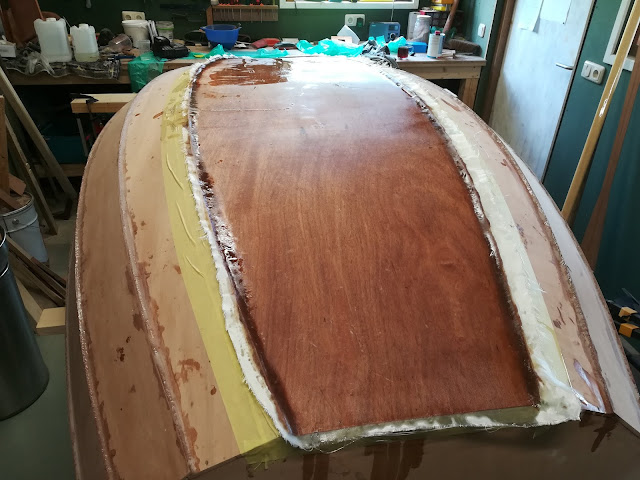
The bottom of the boat needed glassfiber, but when I unpacked the box, not all fabric was 200 grams. Most of it was 80 grams. I therefore laminated only the front inside part. I taped the outside of the area, spread the fabric, cut is and put the epoxy on it. With a squegee I saturated every part, so that the wood structure became visible again. The rest of the epoxy was used for some wooden parts, including the second of the two spars (boom and sprit) and for strengthening the dagger board case. To be sure that the mixed epoxy started to cure, I waited a little before using it. But when I started to put it on the boat, it was already hot. Just when I was finished, the stirring stick stuck in the pot... With a gloved thumb wetted with denatured alccohol, I smoothened the rough surface of the thickened epoxy around the daggerboard case. Everything looked nice until I removed the tape, causing an ugly rim. I tried to save it by pushing it, but I will still have to sand it when it is cu...



